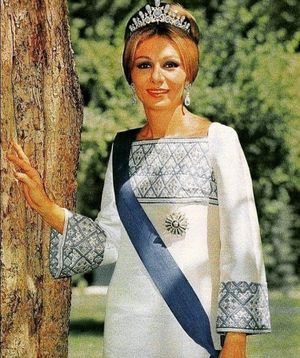User:Negar Motevali
Revision as of 12:53, 15 December 2021 by Negar Motevali (talk | contribs)
Production in Iran
The history of animation in Iran can be dated back to the Bronze Age. A 5,200 earthenware goblet discovered in Burnt City in Sistan and Baluchistan Province, southeastern Iran, depicts a series of drawings of a goat that jumps toward a tree and eats its leaves. Similar forms of pottery with sequential pictures can also be found throughout medieval Islamic Persia. Such drawings are early examples of precursors to the history of animation in general.
Although the first signs of world animation have been seen in this land, today, animation has not been a money-making industry in Iran.
Animation in Iran, like countries such as Japan and the United States, did not become an industry in Iran, animation production in Iran is generally divided into several sections.
The first is short fiction or experimental films with low personal and government budgets, which are the most important animation productions in Iran and are seen in international festivals, and the second is mass-produced TV series with government support. Third, feature films on specific, religious, and moral issues made with large budgets from government agencies. Fourth, small groups with limited personal budgets who personally invest in web series, series, and sometimes feature films.
There are 4 different government institutions to support Iranian filmmakers
- Institute for the Intellectual Development of Children and Young Adults (KANOON)
- Documentary and Experimental Film Center
- Saba center
- OWJ, Arts and Media Organization
The Process of Animation Production in Kanoon
One of the biggest animation studios In Iran, we refer to this center as “KANOON” and its oldest animation studio is in Iran. they work mostly in traditional Cel Animation and Stop Motion. Kanoon also organizes the Tehran Animation Festival. Kanoon was established in 1940 by the Queen of Iran, Farah Pahlavi, as a cultural center. Graphic artists and painters came together and produced the first Iranian art animations. In 1969, Kanoon sent Noureddin Zarrin Kelk to Belgium, and when he returned to Iran, he activated Kanoon's animation department, and Kanoon Cinema Center was born. The golden age of the center's productions was at this time when all films were made with government funding. The center continued to operate after the revolution, but due to the restrictions and policies of the managers, it never returned to its original golden age.
For a long time, the only animation production center in Iran was Kanoon of the intellectual development of children and adolescents. After the Islamic Revolution in 1978, Iranian art fell into a long sleep. The Islamic Revolution and the Iraq-Iran war led to the flight of artists from the country and the change of their jobs and the closure of art schools. After a long hiatus in cinema and animation, the arts and cultural centers gradually reopened. Kanoon is one of the most important centers for the production of short animations in Iran today.
They paid in 5 Instalment:
(After they approved the script and one concept) In every installment, they pay the director 20% of the whole cost
- Concept, Character design, Animatic (20%)
- 70% of the animate (20%)
- 30% of the animate, editing (20%)
- Sound and music (20%)
- Final animation (20%)
The duration of the contract depends on the time of the film usually takes two years and the film director, who has received the full budget, is responsible for paying for other elements of the film, such as the animator, editor, sound designer, and composer of his choice.
Short animation for ten minutes is paid 3200 euros to 5600 euros. That means on average 435 euros per minute, depending on the type of technique as well as the director's skill.
But!
After the film is made, the center is responsible for participating in festivals, distributing and selling the film in world markets, and the director has the only Intellectual property rights of the film.


